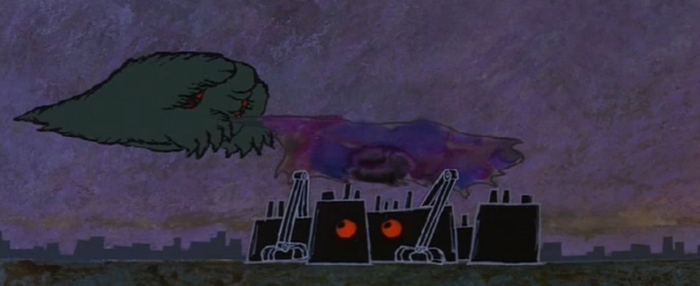Bogleech.com's Favorite
MUCK MONSTERS
Written by Jonathan Wojcik
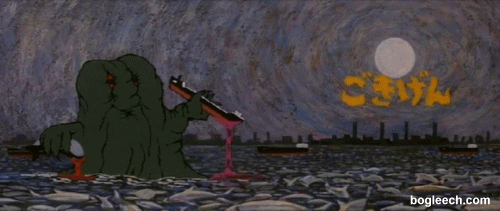
Not to be confused with more conventional slimes, blobs and jelly creatures, muck monsters (an admittedly convenient term coined by the spare-time-sucking parasite, TVtropes) are those
monsters whose very bodies are made up of decaying trash, raw sewage, toxic sludge or any
other filthy, messy, unmentionable waste. They are pollution itself brought to life, often to teach
the audience a valuable lesson about conservation or just provide our hero with a nauseating
new adversary. These messy mutants are always a favorite of mine, and there's probably more of them mucking about in pop culture than you thought - enough that I left out at least a few to keep this list halfway compact.
The criminally insane but fearlessly valiant superhero The Tick shares his Fox Kids animated
series with a host of other oddball heroes, but one of the oddest (and most lovable) is the dopey
Sewer Urchin or "stinky" to his "friends," whose duty as "defender of the sewers" seems like a
joke until the Tick and Arthur actually join him on one of his missions.
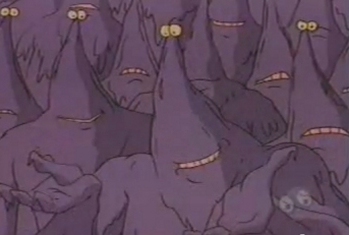
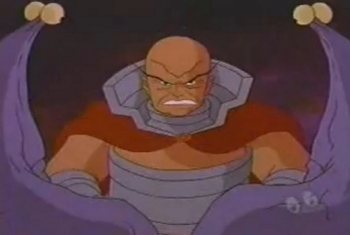
Down in the sewers, our heroes discover the Urchin's impressive high-tech headquarters,
monsters like the dreaded Wallet Angler and a formidable villain, the Sewer Czar, who plots to
destroy the surface world with his army of walking, talking sewage or simply "Filth."
Unfortunately, he gives his disturbingly tapered, googly-eyed creations a little too much
intelligence, and it's not long before the Filth begin to ask inconvenient questions about why they
should destroy the people whose refuse is their very existence. By the end of the episode, the
Czar is defeated by his own mushy minions, and the Filth vow to live in peace with humanity.

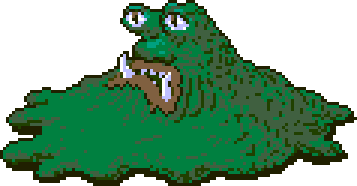
One of the most beloved console RPG titles of all time, Earthbound (Mother 2 in Japan) is a dramatic sci-fi fantasy adventure contrasted by its simplistic, crudely drawn style and quirky humor.
Ness, a boy not even in his teens, battles hordes of unusual foes in his quest to defeat the
horrific entity known as Giygas, but the foulest of all are the "slimy little piles" and their ruler,
Master Belch, a living mass of vomit and one of Giygas's highest ranking servants. Addicted to
"fly honey," Belch enslaves an entire race of peaceful aliens to mass produce the
unpleasant-sounding substance, and threatens our heroes with "the pain of true nausea" when
they arrive to stop him.

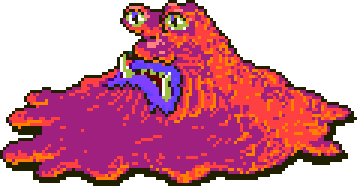
Later in the game, Belch attempts revenge under the new name Master Barf, claiming that he
has grown far stronger through rigorous training and boasting the wonderful new battle cry,
"drown to death in puke!" - which he believes is a more "masculine" thing to say to his enemies. He's single, ladies.


To the delight of all (me) Earthbound features two additional muck monsters formed from the
contents of garbage cans, the "Stinky Ghost" and my favorite design in the entire game, the bug-eyed, weevil-nosed "Putrid Moldy Man!"
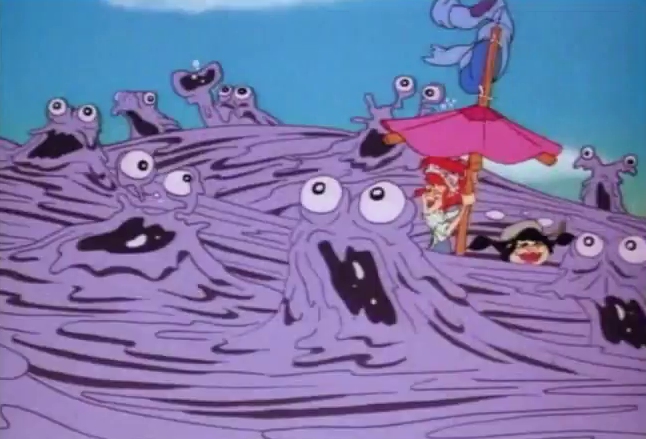
My Little Pony gets a lot of attention these days - for better, for worse, and for worser - but for one of its finest contributions to our collective culture, we have to go back to the corny 1986 giant advertisement theatrical film, wherein some adorably evil-for-the-sake-of-evil, pony-hating witches mix up an evil, toxic brew to ruin ponyland once and for all! A brew which positively steals the show the moment it appears:
Granted, it doesn't take much to outperform a cast of saccharine mini-horses with interchangeable personalities, but THE SMOOZE could probably overshadow any performance in cinematic history. Can you even imagine how much better The Phantom Menace might have been if Darth Badmean or whoever unleashed a tidal wave of singing, googly-eyed purple phlegm?
THE SMOOZE obviously isn't allowed to melt any faces or evn inflict a few measly genetic diseases in this G-rated toy commercial, but it does turn any living thing it touches into a jerk, which is kind of funny.
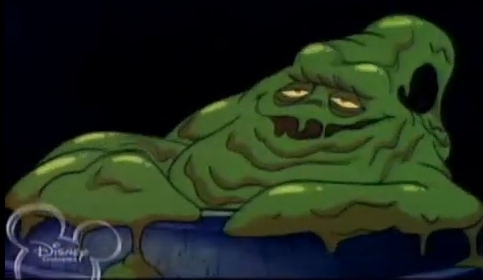
One exceptionally strange episode of Disney's New Adventures of Winnie the Pooh preaches the values of tidying
up in the most dramatic manner possible, as Christopher Robin and his stuffed animal pals
journey under the boy's bed (and into his imagination) to find a whole fantastical world of dust,
garbage and clutter.
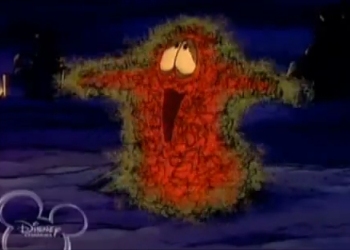
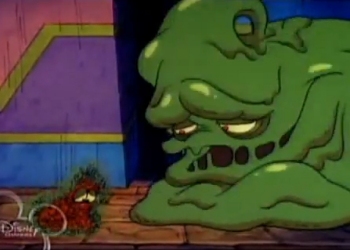
This filthy kingdom is ruled by Crud, a gooey green mass who orders around an army of
discarded toys from a vat-like throne. Along with his cute, sniveling dust-bunny sidekick,
Smudge, the villainous heap plans to build a reverse vacuum cleaner that will spread his filthy
ooze throughout the world. As you might have guessed, our heroes eventually reverse the
reverse vacuum, trapping the filthy monsters where they belong and snapping back to reality
where they're straightening up the last of the kid's bedroom.
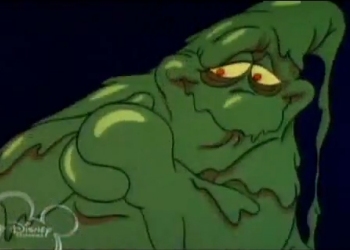
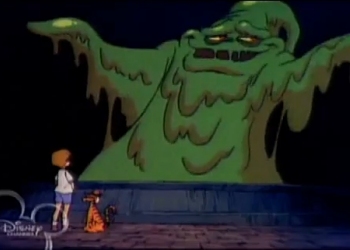
I watched Pooh bear religiously as a small child, but this episode had such an uncharacteristic
fantasy adventure tone that for the longest time, I wasn't even certain it existed. I thought
perhaps I'd dreamed the whole thing, or that I was confusing it with an episode of the generally
weirder Muppet Babies, but no, our little dopey honey-eating Pooh Bear really did go on an
imaginary adventure with a maniacal pile of scum, a giant vacuum and an army of crayon
soldiers. Awesome.
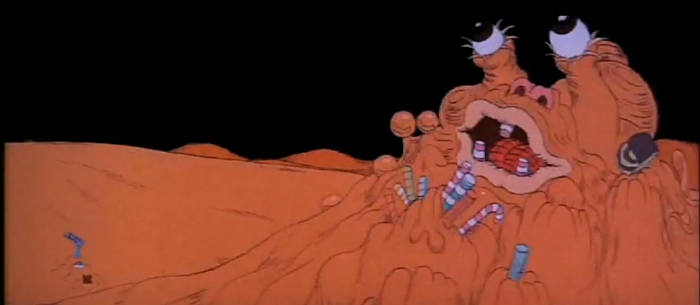
Mr. Greedy here is one of many creative characters featured in Fleischer studio's beautiful
Raggedy Ann and Andy: a Musical Adventure. This gigantic, liquid mass of taffy, ice cream,
caramel, cake and other junk food spends his existence perpetually (and grotesquely) eating
himself to drown his own loneliness, twisting and churning into so many bizarre shapes that no
two frames look like the same creature!
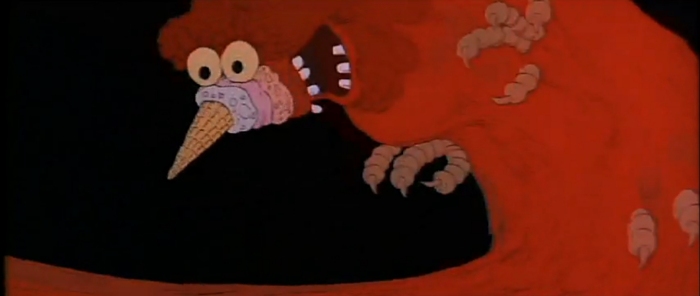
Now, you might be thinking that this guy doesn't belong on the same list as monsters made from
diseased sewage or atomic runoff, but in the long run, you have to admit that the Greedy's
composition is, essentially, toxic. He's not literally garbage, but he certainly represents a diet of junk, and as many of our other examples were conceived as symbolic environmental messages, the Greedy is more or less designed to turn us off from "polluting" our own bodies.
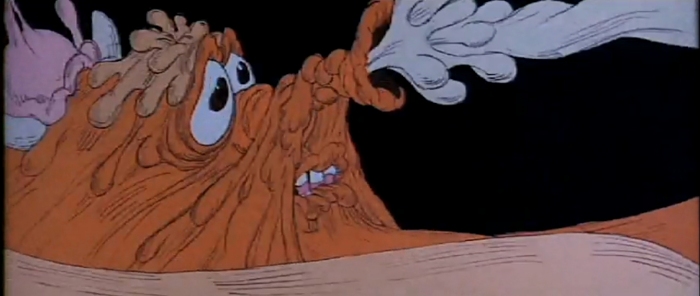
After the Greedy's song about his longing for a "sweetheart," Raggedy Ann has the poor
judgment to mention that her own heart is literally made of candy, and the Greedy believes he'll
find happiness if he cuts it out of her and eats it, which is pretty horrifying even when we're
talking about animated plush toys. You can watch his full sequence here, but be warned: the animation quality may spoil you. Your average
cookie-cutter anime has nothing on this 70's masterpiece.
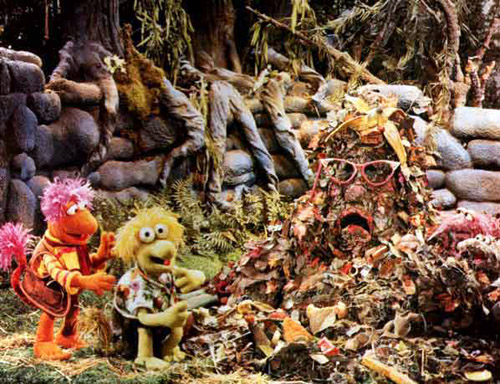
Jim Henson's Fraggle Rock was an ambitious, sometimes thought-provoking family series
starring fun-loving subterranean critters called Fraggles, who shared their world with the tiny,
industrious Doozers and towering, ogre-like Gorgs. Much of the series dealt with complex
social dilemmas, ranging from everyday friendship to issues of racism, and when the Fraggles
had nowhere else to turn to, they came to the Gorg's sentient, motherly trash heap for wisdom.
One of our only muck monsters with absolutely no destructive tendencies, this weird, living mountain of
compost seemed to be the most intelligent being in the series, though her advice was
sometimes misinterpreted by the child-like Fraggles. Like a parent, she often had to simplify
concepts for the little guys to learn anything, even inventing "magical" explanations for mundane
solutions.
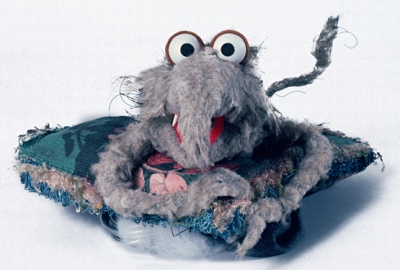
Marjory was always accompanied by a pair of shrew-like vermin named Philo and Gunge, her
friends, helpers, spokesmen, and somehow or other, the very source of her sentience. Though
they only appear to be simple scavengers, we learn in one episode that the trash heap was
inanimate until the little guys took up residence amidst her decaying mass, and if they ever
leave her, she'll fall ill and presumably "die." This surprisingly deep symbiosis between these
seemingly silly creatures ties in well with the overall message of the series to appreciate the
relationships we all have with one another, no matter how minor they may seem.
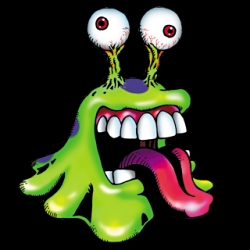
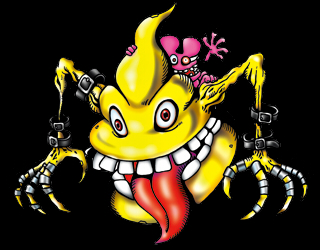
The "Digimon" franchise began as a more violent answer to other "virtual pet" toys, capable of
"digivolving" into higher forms and doing battle with one another. Many different evolutions were
available to each Digimon, but not all of them were necessarily improvements. Should you
neglect to clean up your monster's virtual droppings, you would be punished (or from my
perspective, rewarded) with a lowly, slimy "garbage" Digimon, the first and most famous of
which is the slug-like Numemon, whose only method of defense is to throw you-know-what at
his opponents. Sukamon, on the other hand, is slightly more fitting for this list, as his body is
actually composed of the very substance that spawned him. Always ridden by a symbiotic
Chuumon, it's said that both monsters share a single small brain between them.
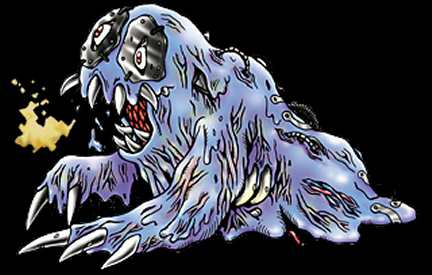
In later editions of the Digimon pets, the awesomely horrific Raremon was introduced. Largest
of the garbage types, Raremon represents an organic Digimon who attempted - and failed - to
evolve into a machine-type Digimon, becoming a malformed, puking heap of rotten flesh held
together by crude cybernetics. My personal favorite Digimon, I just adore those ghastly eyeballs
of his!
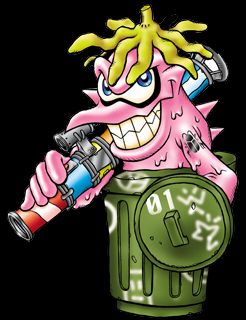
In a bizarre twist, garbage digimon traditionally evolve into strikingly powerful stuffed animal
monsters, like the teddy bear Monzaemon (Numemon's usual evolution) or spooky Barney-like
Extyrannomon (former Raremon), though they also have the option of evolving into
Garbagemon here, the ultimate digital trash monster. The cockroach tattoo is a nice touch.
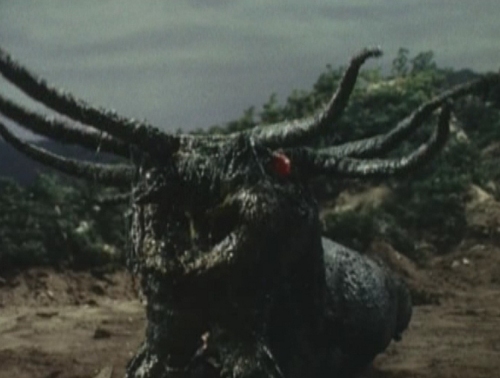
Many, many toxic waste creatures show up in such Tokusatsu series as Super Sentai, Kamen Rider and Ultraman, but Spectreman's "Hedoron" seems like a fondly remembered one, was special enough to make a return appearance, and is actually the reason a certain Godzilla film had to go with the name Hedorah to avoid confusion. Created by the evil Doctor Gori from Earth's polluted seas, the slug-shaped monster's writhing tentacles and circular maw can spew a deadly, acidic yellow vapor, while its dripping body poisons everything in its wake! A nonhumanoid design is always a special treat in this genre, and I love how it only has a single, bulging red eyeball on one side of its head!
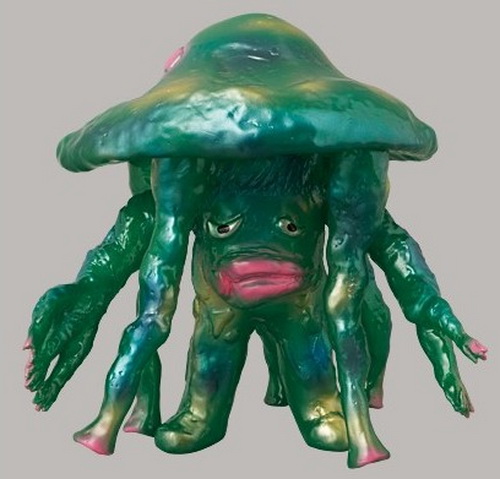
Quite fond of his slimy spawn, Doctor Gori would eventually re-create and enhance Hedoron into the more jellyfish-like, airborne Neo-Hedoron, now able to shrink in size, invade human hosts and absorb them from the inside, even picking up some disturbingly warped human features in the process! Parasitism, in my pollution monsters? Now you know why I just had to include this guy.
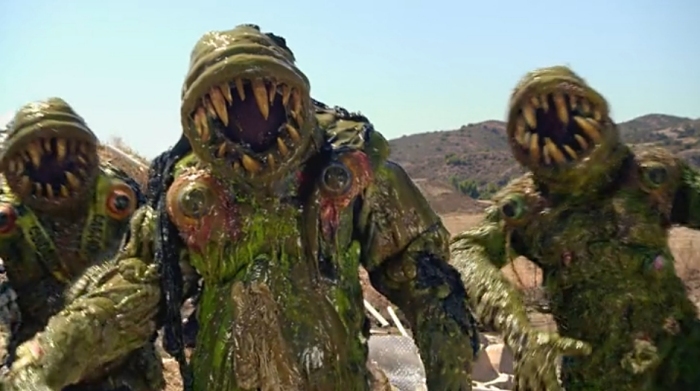
A newcomer to the world of animate rubbish, these gorgeous goons with eyeballs in their chests and pipe-like sucking maws appear in the episode Laundry Day of The Aquabats Supershow on the Hub network, and though they're quickly dispatched in the first few moments of the story, this only puts the semi-heroic Aquabats on the bad side of their ingenious creator, Doctor Eva Mudlark!
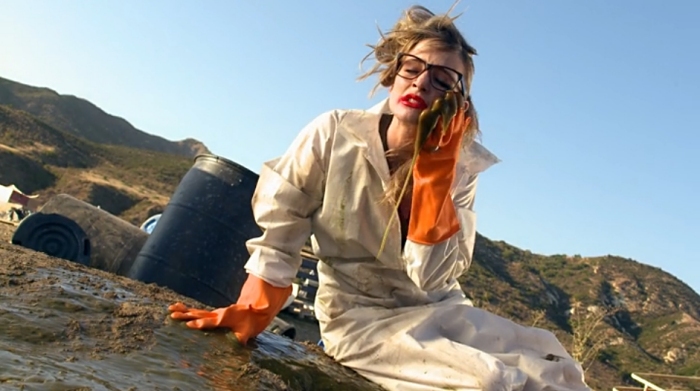
Descended from a long line of lowly garbage collectors, Eva is exactly what Bogleech.com would be like if, instead of a website, it finally realized its destiny and took form as a cute, mentally unhinged lady scientist. Disguising herself with basically a differently colored shirt, Eva hatches a brilliant scheme to pose as a dry cleaner, weaken the Aquabats with free doughnuts and transform their clothes - soiled with the sludge of her deceased "children" - into an unstoppable new garbage creature!
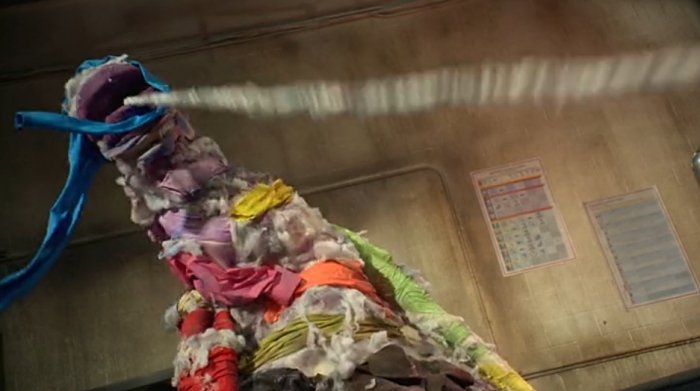
It's hard to get a picture of something constantly flailing as it spends most of its short existence literally and relentlessly whipping butts, but the laundry monster has a pretty classic muck-monster feel; a long necked, eyeless, slug-like mass of lint and fabric with a pair of tentacular arms and a ropey, linty tongue. I even get kind of an Eraserhead's Baby vibe from its unsettlingly equine mouth. As cute and lovable as its mother, until it's finally overloaded by a pair of filthy socks and falls over on her. You live on in our hearts.

Long ago, in 2010, I was delighted to stumble upon The Trash Pack, a toy line from Moose starring "the gross gang who lives in your garbage!" I lamented that something so ghastly, so oddball, so me would likely never catch on with today's gaming-addled youth, but boy was I ever wrong. The Trash Pack did, in fact, take off like wildfire, expanding into numerous playsets, spin-off lines, accessories, plushes and hundreds more figures! Known collectively as "Trashies," these strange creatures can take virtually any form, but always filthy. They can be slime-caked maggots, moldy fruit, rotten carcasses, broken electronics, and of course, living heaps of pure, amorphous sludge! So many are made out of pure dribbling, festering gunk that they almost make it passe, but I just love them all the more for that.

It's Muck Bucket!
Not much of a "storyline" is provided for these cute little crudballs, but it's fun to ponder where Trashies really come from. How do all these unrelated things, from live animals to inanimate objects, take on new life as maniacal, pop-eyed little monsters? Did some experimental bio-weapon contaminate a landfill, transforming everything it comes into contact with? Does some magical spirit of decay grant special sapience to refuse and the things that feed upon it? Who knows. Whatever Trashies may be, every last one is a lovable, unique snowflake. A snowflake made of maggots.
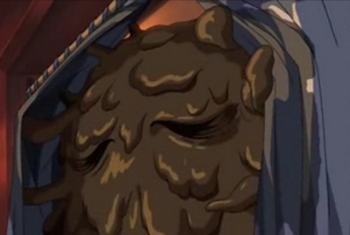
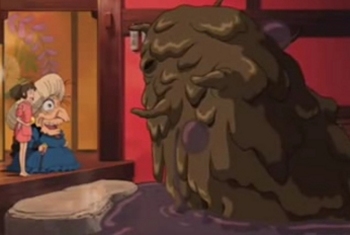
Miyazaki's beautiful animated film Spirited Away tells the story of Sen, a little girl working at a
magical bath house where a variety of supernatural entities seek spa treatment. My personal
favorite is initially referred to as a Stink Spirit, which causes quite the ruckus when it drops by
for a bath. Gorgeously animated, you can almost smell the monster yourself as it slops about the
screen, writhing innumerable little pseudopodia and sweating thick, syrupy globules of purple
pus. It's a design as beautiful and lovable as it is gross, though unfortunately only temporary
(minor plot spoilers follow)
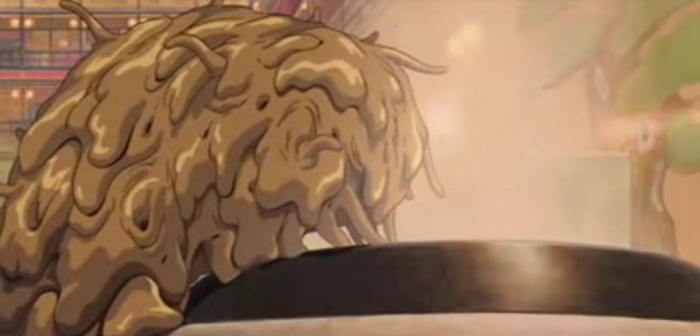
The selfish ghosts and goblins of the Bath House leave their most odious customer entirely in
the hands of Sen, who refuses to fail and boldly tackles the endurance test head on. I'd swear
the animators must have spent a lot of time looking at peanut butter, here. At least, let's hope it
was peanut butter.
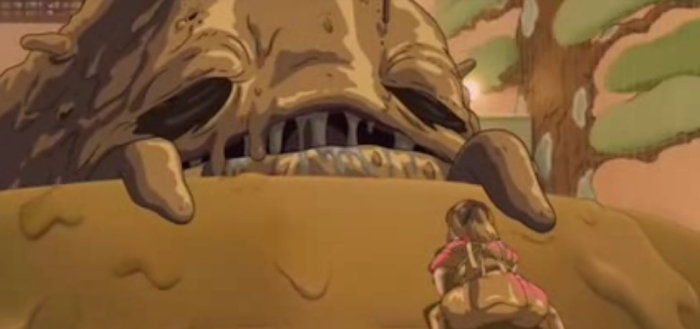
As Sen tends to the sluggish glob, she finds something strange lodged in its body; an entire,
rusty bicycle. Believing the creature must be in pain, she pulls out the foreign object along with a
massive clot of tangled trash, discovering that she hasn't really been dealing with a "stink spirit"
at all, but a (rather spooky looking, albeit benevolent) river spirit polluted by man's refuse. It's a
sweet moment, though I like to think there are still "actual" Stink Spirits elsewhere in this fantasy
realm. The mistaken identity certainly implies that there must be.
Pokémon or Pocket Monsters come in hundreds of different varieties, categorized into
seventeen "types" including fire, water, dragon, bug, psychic, and my personal favorite, poison.
Most poisonous 'pokes are based on venomous plants and animals, but three special cases
are living, breathing embodiments of inanimate, man-made pollutants.

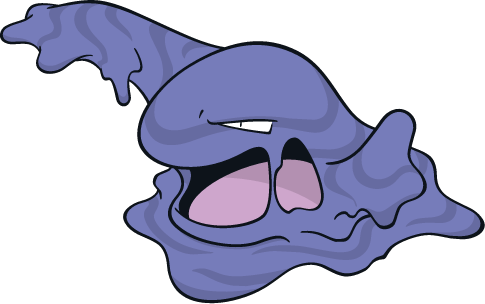
Grimer is the sludge Pokémon, a googly-eyed purple menace said to have been born when
industrial waste was exposed to "x-rays from the moon," because SCIENCE. Craving a diet of
sewer water, its rubbery, goopy body is so saturated with bacteria and toxic fluids that the
slightest touch can cause serious illness and no plant life will grow in its wake. At level 38,
Grimer evolves into the bigger, meaner and even more virulent Muk, whose stench even seeps
out through a pokéball container! As simplistic as these two are, I wouldn't want them any other way; sometimes, you just want a pile of goop with eyes on it.
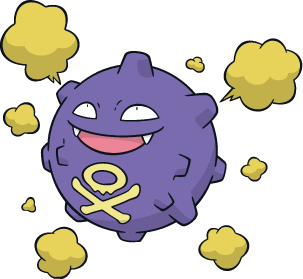

The perfect counterpart to Grimer, Koffing is a smog Pokémon, a bizarre, balloon-like monster that thrives off air pollution and can vent dangerously toxic gases from the pores throughout its membranous skin. Due to the volatile chemicals swirling inside it, it can even explode like a bomb at any moment. At level 35, it evolves into the adorably hideous Weezing, actually two Koffing grotesquely melded together in a molecule-like arrangement. I always loved that faceless, vestigial little body between the two heads, and I've always been amused by the sheer misery on Weezing's faces. Koffing looks blissfully happy just to be alive, but Weezing seems to have realized that its existence is an unnatural aberration of nature.
For a long time, Muk and Weezing stood alone in the pokeyverse, living, mutant toxic waste creatures in a sea of fuzzy animals and scaly dragons, until the Black and White generation brought them the new friends they always deserved:

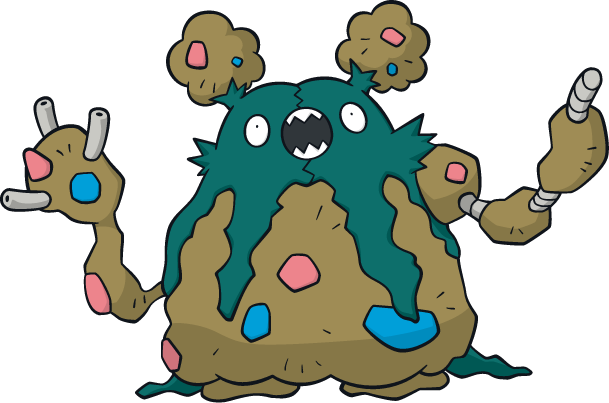
Introduced a whopping fifteen years after Grimer and Koffing, Trubbish (could it be any cuter, name and all?!) is an obvious homage to the both of them, consisting of an entire trash bag brought to life by industrial waste. Both the bag and its contents are a part of its being, forming amoebic limbs out of pure refuse and belching a malodorous gas as a defense mechanism. At level 36, cute little Trubbish evolves into the delightfully ghoulish Garbodor, its plastic bag skin torn to shreds by the bulk of its own bloated garbage guts! I especially enjoy that mad, screaming monster face and the "skeleton" of pipes showing through its misshapen arms. By far, my instant favorite of the franchise - whiners be damned.
Interestingly, though all three are pure "poison" types, the fluid Grimer is said to favor water as its environment, while Koffing floats in the
air and the relatively more solid Trubbish can be found on land; a trash 'poke for all three of the major domains.
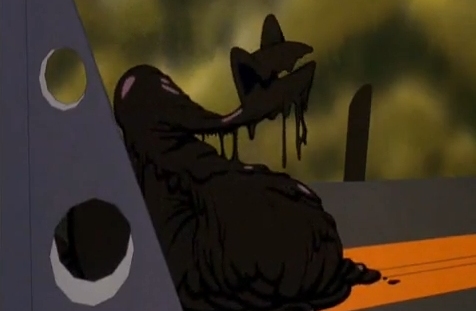
Hexxuss, the "spirit of destruction," is the very embodiment of poison, a spiteful godlike entity
whose fixation on toxic waste borders on a sexual fetish if his classic villain song is any
indication. Imprisoned for centuries in an old tree, Hexxuss is accidentally freed by a logging
operation as a sort of tiny "larva," a wormy clump of ooze with such a neat appearance that I
stole it as an imaginary friend after my first viewing.
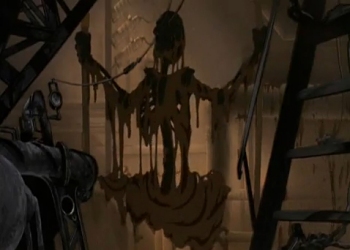
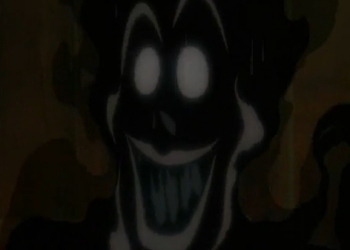
Finding plenty of nourishment in the bowels of the logging machine, Hexxuss gruesomely
transforms from cute little slime to not-so-cute smog man, and guides the wave of destruction to
the central home of the fairies.
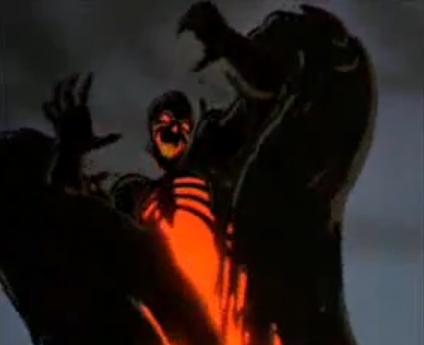
In the film's climax, Hexxuss transforms yet again into what may be his "true" form; a titanic,
flaming skeleton with a cloak of dripping sludge! As with many villains however, looking insanely
badass is no protection against moral values and hippie magic, as he is defeated when he
accidentally swallows a seed and transforms once again into a gnarled tree.
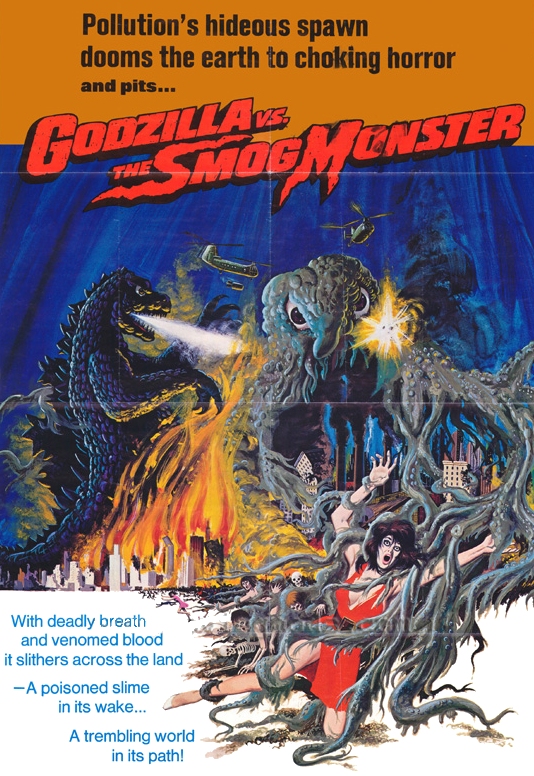
Possibly the great grandmother to half our list, Hedorah, A.K.A. the Smog Monster is by far my
favorite of all giant, rampaging Japanese movie monsters, and a frequent fan favorite among those who have
squared off against Toho's legendary king of the monsters, Godzilla.
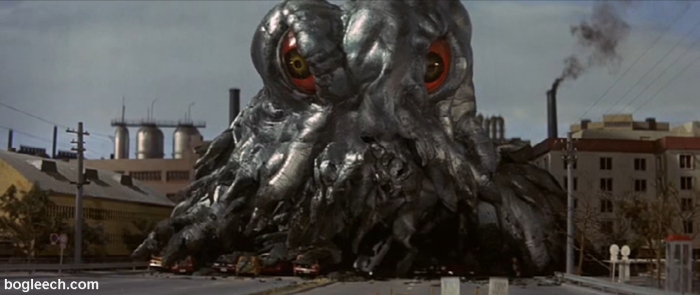
Arriving to Earth as a meteorite laden with extraterrestrial spores, Hedorah begins its wave of
terror as millions of tadpole-like larvae whose inorganic chemical makeup is deadly to all
Earthly life. Thriving off Japan's horrendously polluted coastal waters, the tadpoles eventually
merge into a single humongous monster, a stinking, corrosive slug that spoils everything it
touches. In an alien mockery of evolution, the conglomerate organism undergoes spontaneous
leaps of adaptation, sprouting legs and a tail as it crawls onto land like a titanic, dripping
salamander and guzzling fumes directly from factory smokestacks.
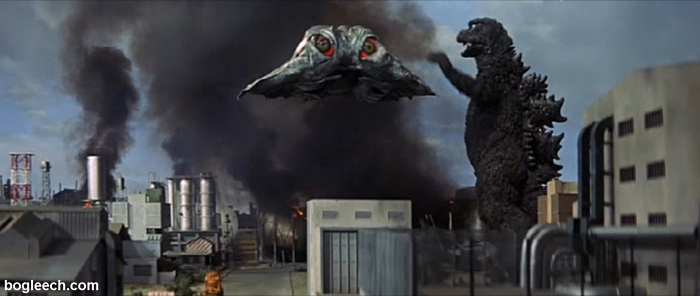
Next, the toxic titan takes to the sky in a hovering saucer-like configuration, leaving a vapor trail
that horrifically reduces human beings to bleached skeletons in mere seconds. Scientists
deduce that the monster's ultimate goal may be to terraform our environment, transforming it
into the same harsh environment it likely evolved in.
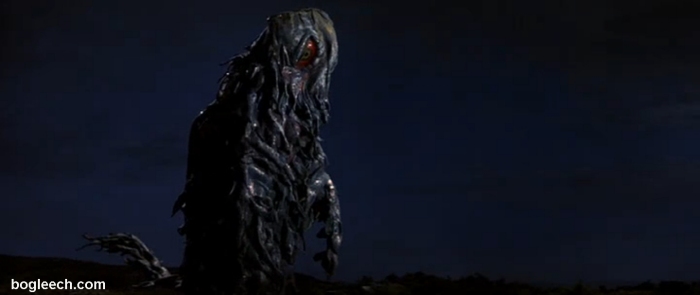
We will never know just how
many more shapes this monster may have taken, but its final form before its defeat is a biped
that towers over even Godzilla himself, and comes closer to killing our reptilian antihero than
almost any prior opponent. Ultimately, Hedorah falls to the combined efforts of the lizard and a
man-made electrical trap, marking one of those rare Godzilla films where humans actually
accomplished anything.
Click to see more from this animated segment!
Godzilla vs. the Smog Monster was met with poor reception in its day, and still turns off many
fans of the series with its environmental messages and surreal, psychedelic imagery, including
several hauntingly painted animated sequences. Personally, I always thought these made it one of the coolest
Japanese monster movies of all, and the environmental message quite fair.
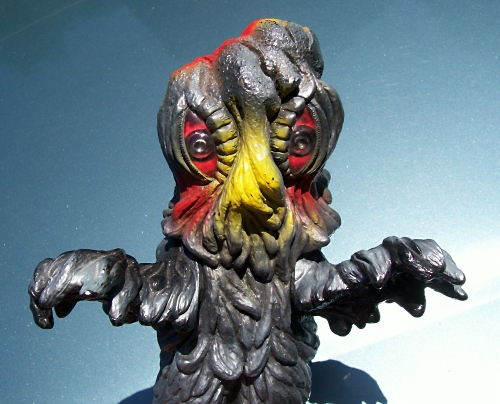
My own Bandai Hedorah - I've had this guy since I was ten!
I always found it interesting how Hedorah gradually takes on a more anthropomorphic shape,
and how those penetrating, emotionless eyes are so eerily human, albeit in an alien
configuration - explicitly intended by its designer to call to mind female genitalia. He may seem like just another bug-eyed movie monster at the end of the day, but Hedorah holds
a pretty poignant mirror up to humanity, reminding us that through generations of stubbornness,
apathy and unsustainable consumption, we may yet succeed where it failed. Sadly, the real
results of a polluted world aren't kick-ass mutations, musical supervillains and adorable, walking
trash bags (if it were, I would never clean up after myself), but a premature and permanent loss of many weird, wonderful real creatures who already make our planet as amazing as any fantasy.
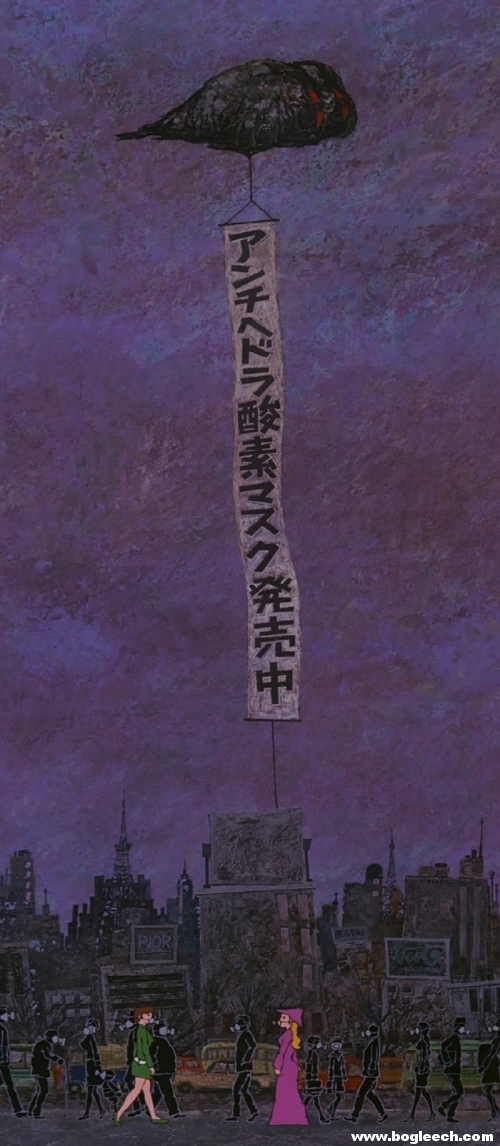
Painting assembled from screengrabs - click for HUGE version!
